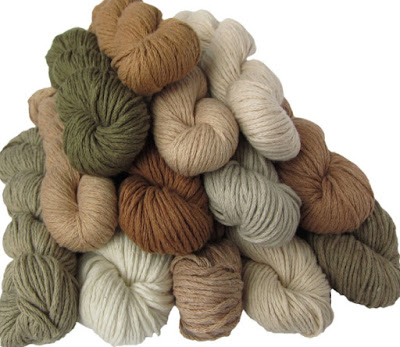If your "collection" is getting out of hand, why not share it with the rest of us. Maybe some of us still don't have a big enough "collection"?
At the August meeting we will have a major Share/Sell/ Get Rid Of. Bring your excess to the meeting in hopes of replacing some of it with different "collection" items, or actually selling or giving away some of it. Monies will need to be exchanged outside the door because the Library does not allow sales in the room. Trading and bartering is always good.
Bring what you've been working on this summer for Show & Tell, and your wheel to put in a bit more spinning time while we listen and talk.
Bring also, ideas you may have for programs for the year. Ones you would like developed or ones you would like to share with the Guild yourself.
Any ideas for a workshop or two? We will have our favorite, Judith MacKenzie once again, sometime this year for a program and workshop.
How about ideas for Dye Day. Loved what happened at the last Dye Day. [Check the previous blog]
DATES FOR YOUR CALENDAR
2017
- Aug 30. Treadles meeting
- Sept. 26. Treadles meeting Date change, this is a Tuesday
- Oct. 25. Treadles meeting
- Nov. 29. Treadles meeting
There must be lots of spinning related doings this Fall. Let me know and I'll add them to the Calendar
COTTON
 |
| PIMA COTTON BLOSSOM |
My neighbor and friend, who is a corrosions engineer, was recently in Arizona on a project with the Pima Native Americans on their Reservation. He came back and asked if I knew what Pima Cotton was. “ What? Of course I know, I’m a spinner”
Then he asked if I knew where Pima cotton originated. “I think in South America”, I answered. Turns out “nope”. It was developed as a joint project between the U.S. Government and the Pima Native Americans of Arizona in the early 1900’s. Who Knew?
Unfortunately, only less than 5% of the world production of Pima is in the U.S. now. It is grown in parts of California, West Texas, and of course, Arizona. Most of Pima cotton now does come from South America from plants developed in the U.S. However, it is partially true that Pima originated in South America.
Early domesticated cotton was grown in Ecuador [4400 BCE], and coastal Peru [2500 BCE]. It is from these ancient varieties, which were a medium staple cotton, that Pima cotton was developed. It was given the name Pima to honor the Native Americans who helped experiment with it in Arizona.
“King Cotton” grown in the South and South West is a short staple cotton more easily grown than the longer staples, and is 95% of all U.S. production.
So what are some of the better known cottons?
- Gossypium hirsutum, short staple cotton. King Cotton. The basic cotton we all know and love to wear.
- Pima. A medium to long staple. Fabric made from this will be softer, denser, and more durable than basic short staple cotton, with less pilling
- Egyptian cotton. A truly long staple cotton that makes luxurious cotton products.
- Sea Island cotton. Another truly long staple cotton, even more desirable than Egyptian, but now in very limited production. James Bond only wore shirts made of Sea Island Cotton.
- Supima Cotton. A relatively newly developed type of cotton: [“Superior” and “Pima” words combined together] Supima is now fighting its way into the U.S. market with its obvious luxurious long stapled quality. Supima is grown only in the U.S. and primarily in the southwest. A purchase of clothing or linens labeled “Supima Cotton” supports the national economy because it is only domestically produced.
What about naturally colored cotton
My friend said the Pima's are growing a blue cotton they hope to market. We all know about Sally Fox and her green and brown cottons. But few of us are aware that the colored cottons are very old plants. The slaves of the South grew many colors of cotton before King Cotton became prominent. They, and Native Americans grew many tones of brown, dark green, black, red and blue. Production of colored cotton was eventually prohibited in many parts of the U.S. so that white cotton would not be contaminated.
 |
| COLORED COTTON |
Why should we support development of naturally colored cotton?
The environment. The white cotton in massive production is a variety that requires more pesticides than other varieties of cotton. Also, the dyeing of cotton is a massive cause of land and water pollution. According to the ECO360 Trust, nearly 20% of all industrial pollution results from textile dyeing and production methods. There are 72 toxic chemicals that are present in our water system due to textile dyeing. The tannins that create the color in cotton makes it highly pest and mildew resistant.
END NOTE - TREADLES HISTORY
 |
| DYE DAY 2002 at Linnie's back yard. Natural Dyes |
